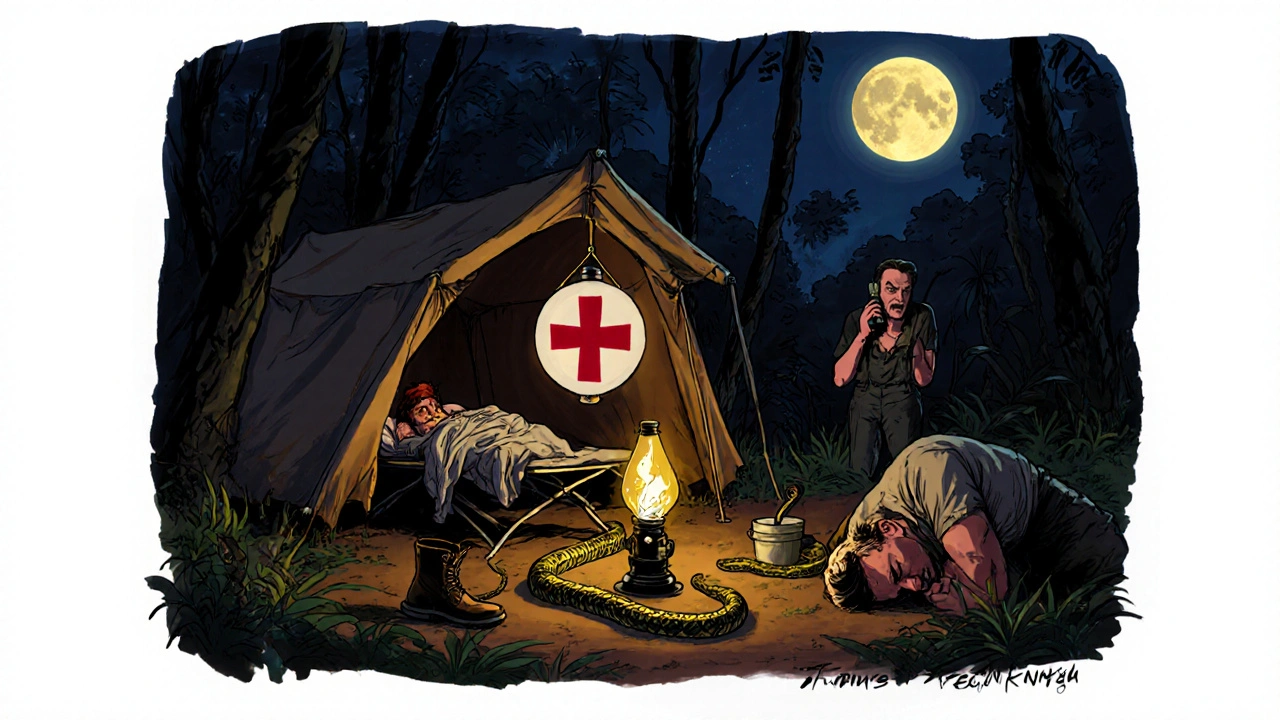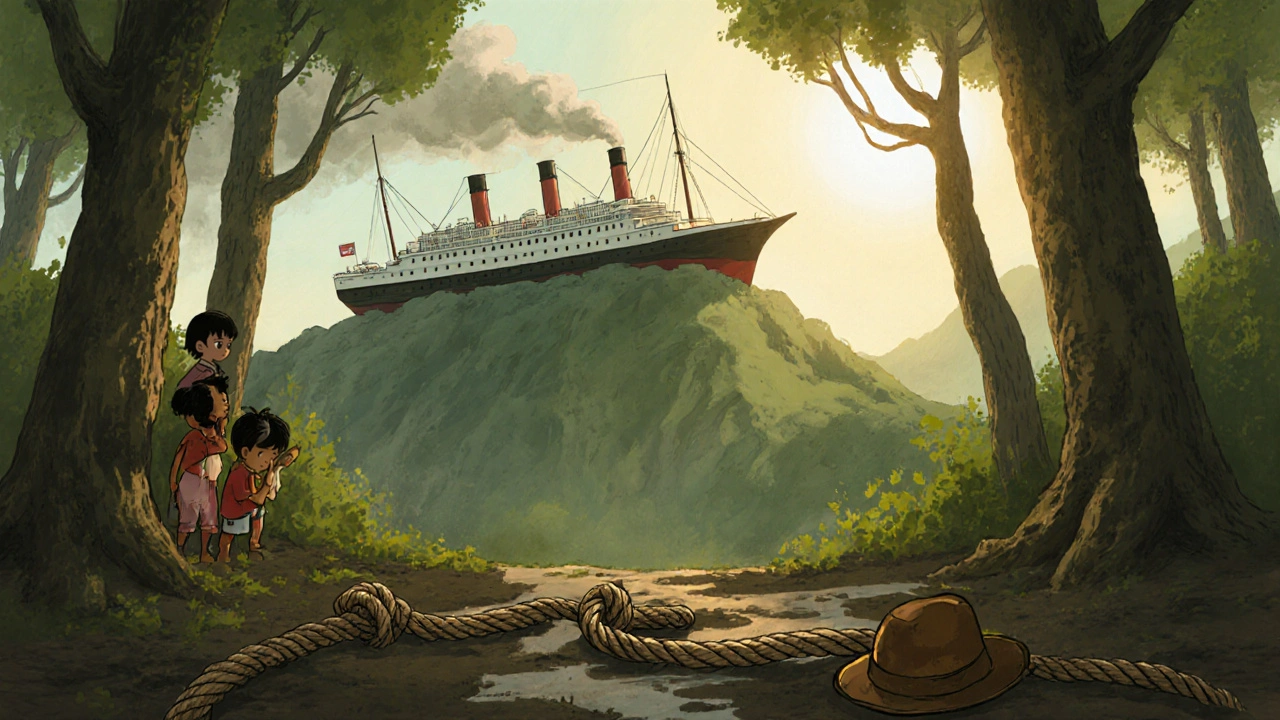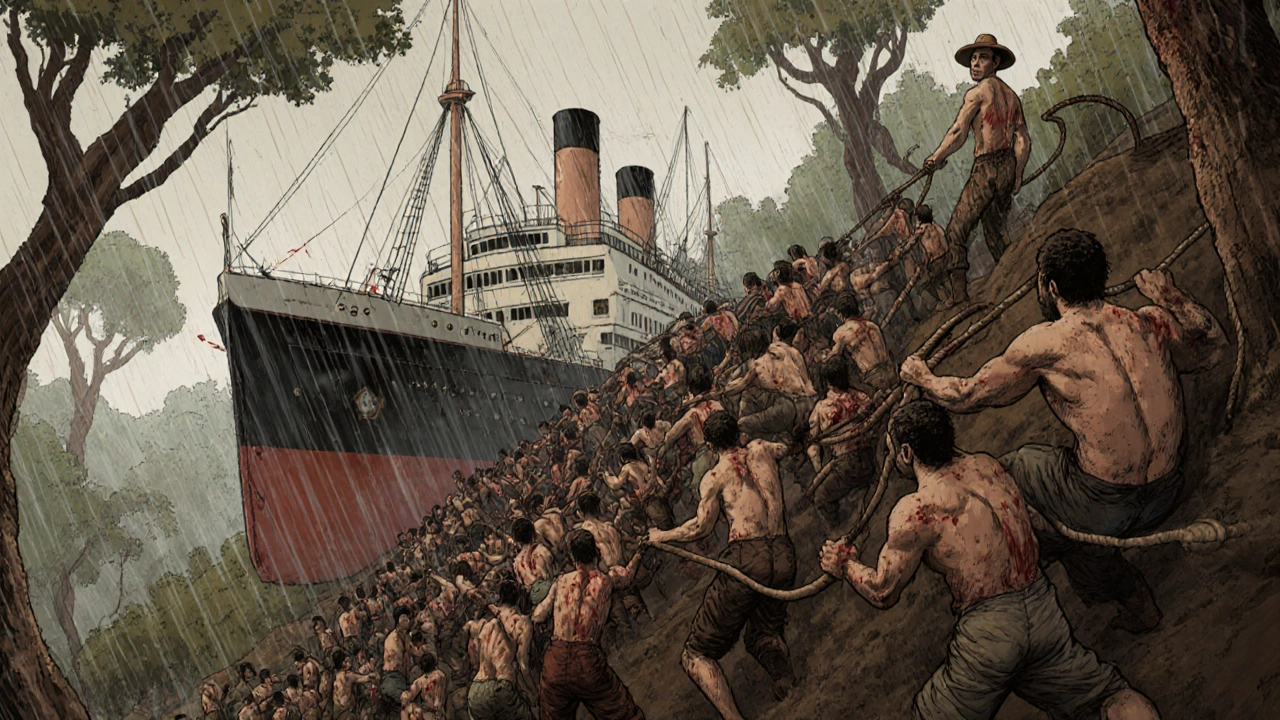The story of Fitzcarraldo isn’t just a movie. It’s a myth made of sweat, blood, and a 320-ton steamship dragged over a mountain in the middle of the Peruvian rainforest. No CGI. No stunt doubles. No safety inspectors. Just a man who believed the impossible had to be real to be true.
Why a Ship on a Mountain?
Werner Herzog didn’t want to make a film about a man obsessed with building an opera house in the jungle. He wanted to make a film about obsession itself. The plot of Fitzcarraldo is simple: a dreamer tries to transport a steamship across a hill to reach rubber-rich rivers. But Herzog didn’t hire a model. He didn’t use green screens. He insisted on moving a real, full-sized steamship-weighing over 300 tons-up a 40-foot slope covered in thick jungle. Producers laughed. Locals warned him. The jungle didn’t care. He did it because he believed truth wasn’t found in scripts. It was found in the body’s struggle against nature. "Ecstatic truth," he called it. A phrase that sounds poetic until you realize it meant workers collapsing from heatstroke, snakes biting ankles, and men hauling ropes until their hands bled.The First Attempt: Collapse Before It Even Started
The first try, in 1979, ended before it began. Lead actress Claudia Cardinale broke her leg in a fall. Klaus Kinski, Herzog’s volatile lead actor, threatened to quit after being bitten by a monkey. The crew was already fracturing. Herzog called it quits. He lost $1.5 million. The studio pulled funding. Everyone thought it was over. But Herzog didn’t walk away. He went home. Sold his car. Pledged his house. Put $500,000 of his own money into the project. Then he returned. In 1980, he started again. This time, he brought 150 people into the jungle with no phone service, no reliable radio, and the nearest hospital 200 miles away. They had no permits. No safety plan. Just a map, a dream, and a ship that didn’t belong there.The Jungle That Refused to Cooperate
The Peruvian Amazon in 1980 wasn’t a filming location. It was a living, breathing enemy. Temperatures hit 95°F. Humidity hovered near 95%. Rain fell in sheets. Mosquitoes carried malaria. Anacondas slithered through camps. The crew lived in tents made of plastic tarps. Food spoiled in days. Water had to be boiled three times. To move the ship, they had to clear a 1.2-mile path. Seven thousand trees were cut down. Four thousand tons of earth were moved by hand. No bulldozers. No cranes. Just ropes, capstans, and hundreds of indigenous workers hired from nearby villages. Some were paid in goods. Others were paid in promises. The exact number who died during production remains unknown. Herzog never gave a number. Local accounts suggest more than a dozen. The documentary Burden of Dreams doesn’t show their faces.
The Ship That Moved Against All Logic
The haul took ten months. One hundred and twenty-eight days of filming. Two hundred men pulling on ropes tied to the ship’s hull. They worked in shifts, 12 hours a day, six days a week. Herzog filmed every moment. He didn’t cut. He didn’t fake it. He didn’t stop when the ropes snapped or when men collapsed. There’s a moment in Burden of Dreams where Herzog stands on a ridge, watching the ship inch forward. He doesn’t cheer. He doesn’t cry. He just watches. Like he’s seeing something he knew was possible, but never believed he’d live to witness. The ship moved. Not because of engineering. Not because of money. Because people refused to quit. Even when their bodies gave out. Even when their minds broke.The Cost: Art or Exploitation?
Roger Ebert called it a masterpiece. "The very impossibility of the enterprise becomes the film’s subject," he wrote. Critics praised the rawness. The authenticity. The sheer audacity. But today, the conversation has changed. Film students still watch Burden of Dreams in class. But now, they’re asked: Who were the men pulling those ropes? Did they know what they were signing up for? Were they paid fairly? Did they have medical care? Did they want to be part of this? Herzog never answered those questions. He focused on the triumph. The myth. The film. He called the indigenous workers "part of the landscape." He called their suffering "necessary." Modern ethics say no. Dr. Elena Martinez, who studied the production for her 2021 book on film ethics, wrote: "Herzog didn’t make a movie about obsession. He made a movie that required obsession-and then used people as fuel for it."Why This Can’t Happen Today
Try to do this now. Try to move a ship over a mountain with no safety gear. No OSHA compliance. No medical team on standby. No union oversight. You’d be arrested. In 2025, film sets are regulated. Every stunt needs approval. Every location needs permits. Every worker needs insurance. Safety officers are mandatory. Emergency evacuation plans are required. The budget for safety alone would be $5 million-more than the entire original production cost of Fitzcarraldo. Even independent filmmakers who admire Herzog won’t copy him. A 2023 Film Independent survey found that 78% of indie directors cite Burden of Dreams as influential-but 94% said they’d never replicate its methods. The legacy isn’t in how it was made. It’s in what it reveals: that art can be born from chaos, but chaos always leaves scars.
The Documentary That Captured the Madness
Les Blank’s Burden of Dreams is the only record that matters. It doesn’t glorify Herzog. It doesn’t vilify Kinski. It just shows what happened. You see Herzog, covered in mud, yelling into a walkie-talkie. You see Kinski screaming at a cameraman for not capturing the right angle while a man nearby vomits from fever. You see indigenous workers laughing as they drink beer after a long day. You see the ship, finally, at the top of the hill. And then-silence. The documentary doesn’t explain it. It doesn’t justify it. It just lets you sit with it. That’s why it still works. That’s why it’s still watched. That’s why it’s still debated.What It Teaches Filmmakers Today
Fitzcarraldo didn’t teach us how to make movies. It taught us what happens when someone believes in a vision so hard they forget everyone else is human. It shows that passion can move mountains. But it also shows that mountains don’t care who climbs them. Modern filmmakers don’t copy Herzog’s methods. But they still steal his courage. His refusal to compromise. His belief that if you want something real, you have to risk everything. The lesson isn’t to haul ships over hills. It’s to ask: What are you willing to destroy to make something true?Where to Watch and What to Know
Burden of Dreams is available on Criterion Channel, Mubi, and Amazon Prime. The 2022 40th-anniversary restoration includes three hours of never-before-seen footage-scenes of crew members singing in the rain, indigenous children watching the ship pass, Herzog sleeping under a tarp with a notebook open on his chest. The film’s IMDb rating is 8.5. Rotten Tomatoes gives it 98%. But the most telling number? 427,000 streams on Mubi in 2023. People are still watching. Still wondering. Still arguing. Herzog, now 81, said in a 2024 interview: "I would not ask people to risk their lives the way we did then." He didn’t apologize. He didn’t retract. He just admitted the world changed. Maybe that’s the real ending. The ship made it. The film won. The documentary lives. But the men who moved it? Their names are lost. Their faces, erased. And that’s the part no one talks about.Is Burden of Dreams a real documentary or a reenactment?
Burden of Dreams is a real documentary. Filmmaker Les Blank and his crew lived with Werner Herzog’s production team for over a year in the Peruvian jungle. They shot footage as it happened-no reenactments, no staged scenes. The chaos, the fights, the ship haul, the exhaustion-all of it is real. The only thing edited was the sequence of events to build narrative flow. Everything you see is what actually occurred.
Did anyone die during the making of Fitzcarraldo?
Yes. While Herzog never confirmed exact numbers, multiple sources-including indigenous community accounts and researchers like Dr. Elena Martinez-document at least a dozen deaths during the production. Causes include malaria, accidents during the ship haul, snake bites, and untreated injuries. The crew had only three people trained in first aid. There was no medical team on site. The deaths were never officially recorded, and Herzog rarely acknowledged them in interviews.
Why did Herzog refuse to use a model or CGI for the ship haul?
Herzog believed that only real physical struggle could create "ecstatic truth"-a term he used to describe moments of raw, unfiltered human experience that no special effect could replicate. He wanted the audience to feel the weight, the exhaustion, the danger. Using a model would have turned the film into a fantasy. He wanted it to feel like a myth you could touch. That’s why he spent $12 million and 16 months moving a real ship over a real mountain.
Was Klaus Kinski really as bad as the documentary shows?
Yes. Multiple crew members, including the cinematographer and production manager, have confirmed in interviews that Kinski was violent, unpredictable, and often abusive. He threatened to kill Herzog. He attacked crew members with knives. He screamed for hours over minor mistakes. The documentary shows only a fraction of his behavior. His daughter, Pola Kinski, later wrote in her memoir that his mental instability was extreme, and his abuse extended to her and other family members. Herzog called him his "only true collaborator," but admitted in later years that their relationship was a "toxic symbiosis."
Could you make Fitzcarraldo today under current film regulations?
No. Not legally. Modern OSHA and IATSE safety standards require certified safety personnel on every shoot, emergency medical access within 30 minutes, hazard assessments for every location, and worker consent forms for dangerous tasks. Moving a 320-ton ship by hand in a remote jungle would violate at least 12 safety codes. Insurance companies would refuse coverage. Studios would shut it down before day one. Even indie films today can’t shoot without permits, safety plans, and medical backups. Herzog’s methods are now impossible-not because they’re too hard, but because they’re too dangerous.
Is Burden of Dreams still relevant for filmmakers today?
Yes-but not as a blueprint. It’s relevant as a warning and a mirror. Film schools still show it because it reveals what happens when obsession overrides ethics. It shows the cost of artistic purity. Today’s filmmakers learn from it by asking: "What am I willing to sacrifice?" and "Who pays the price?" It doesn’t teach how to make a movie. It teaches what making a movie can cost.

